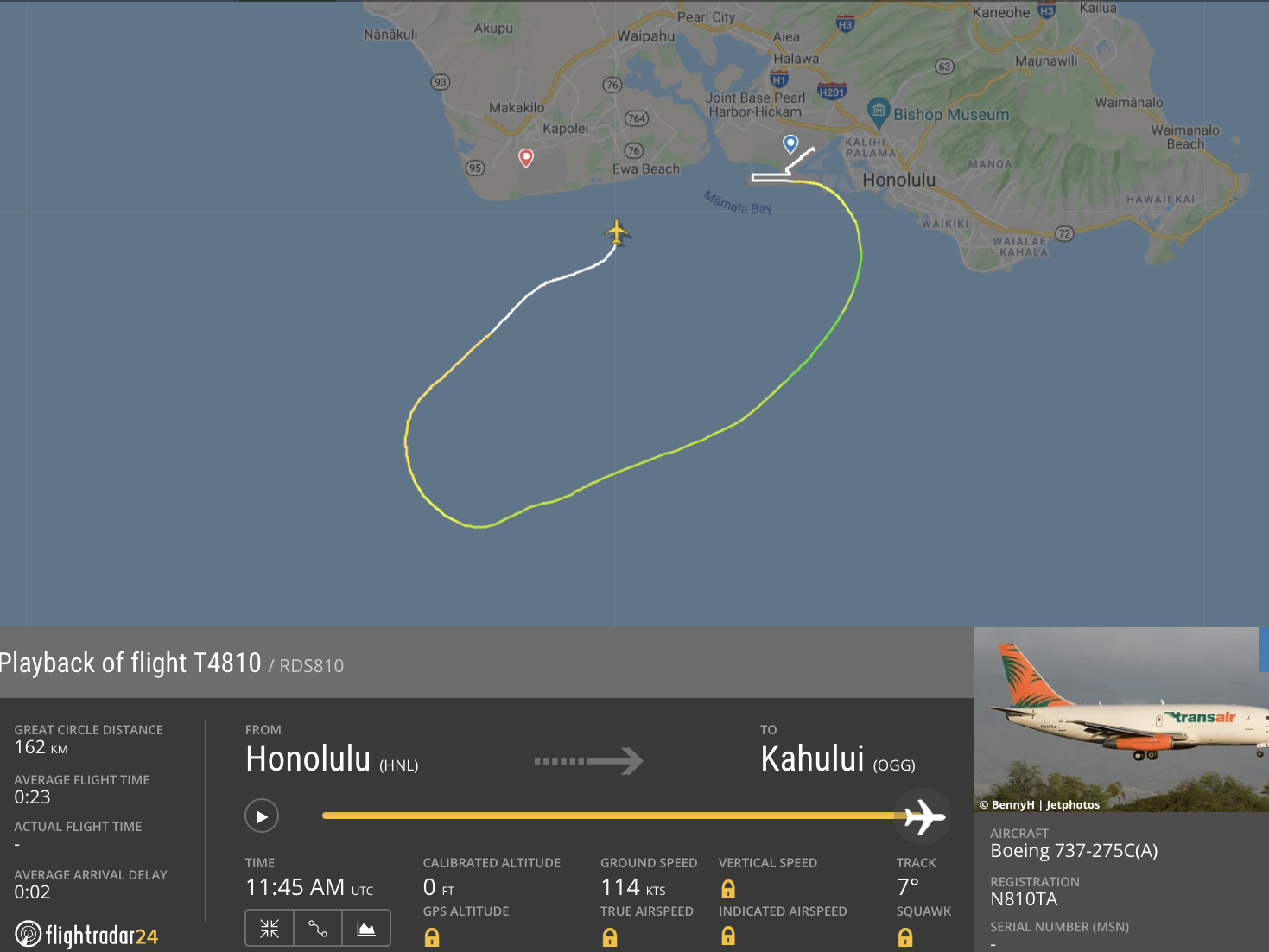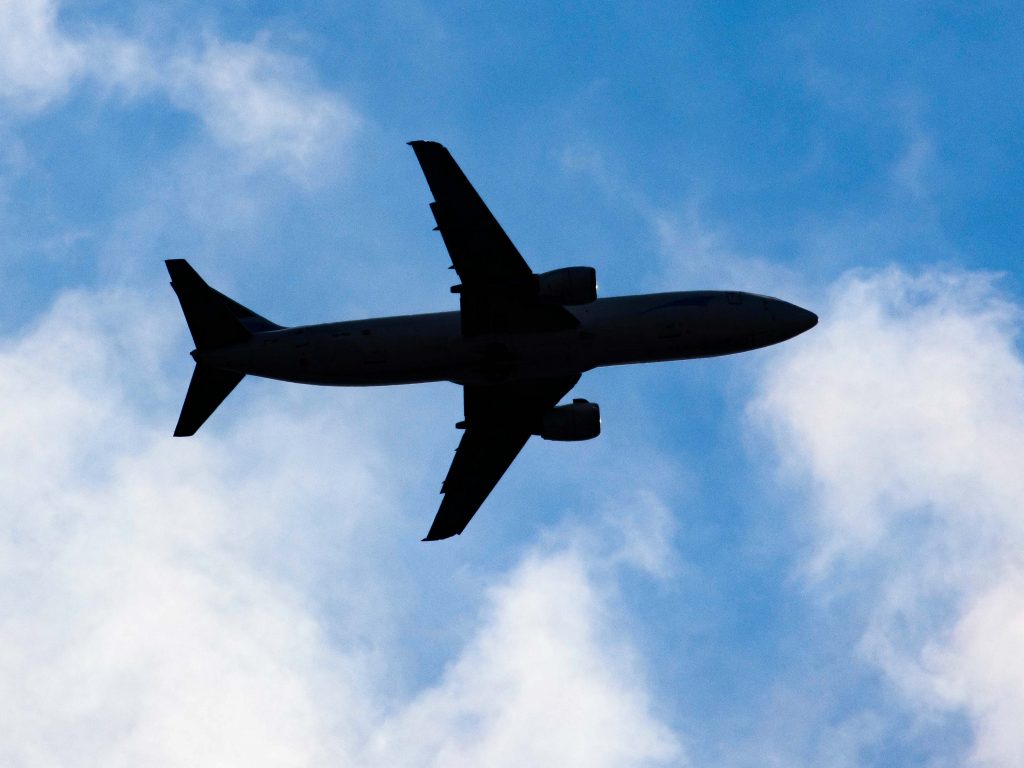
NurPhoto / Getty Images
- A Boeing 737-200 cargo plane with two people on board made an emergency landing in the ocean off the coast of Honolulu, Hawaii, early Friday.
- The aircraft went into the water at around 2:30 a.m. local time about two miles from Kalaeloa Airport.
- Both pilots aboard the jet have been rescued by the US Coast Guard.
- See more stories on Insider's business page.
A Boeing 737-200 cargo plane with just two pilots on board made an emergency landing in the ocean off the coast of Honolulu, Hawaii early Friday morning, officials said.
Transair Flight 810 – operated by Rhoades Aviation, Inc – was forced to land in the water at around 2:30 a.m. local time, the Federal Aviation Administration confirmed in a statement to Insider, after having trouble with both of its engines.
The emergency landing took place two miles from Kalaeloa Airport.
"The pilots had reported engine trouble and were attempting to return to Honolulu when they were forced to land the aircraft in the water," the FAA said.
Both pilots have been rescued by the US Coast Guard.
"The FAA and National Transportation Safety Board will investigate," the agency added.
Air traffic control had cleared the Boeing 737-200, operating as"Rhodes Express 810," for takeoff from Honolulu's Daniel K. Inouye International Airport on Runway 8R minutes before the incident occurred. Flightradar 24 data then shows the aircraft making an immediate right turn from the runway, climbing to an altitude of 2,000 feet.

Flightradar 24
Confusion ensued as air traffic control appeared to miss multiple calls from the aircraft attempting to declare an emergency after experiencing engine issues, according to air traffic control recordings reviewed by Insider.
"Rhodes 810, radio check, how do you read?" pilots asked Honolulu Tower after not hearing a response to their emergency call. Air traffic control had also been communicating and servicing other aircraft throughout the emergency, the recordings show.
Another Rhodes Aviation aircraft sharing a similar callsign was on approach to land, further complicating the airwaves. Pilots didn't immediately return to the airport and kept flying away from Honolulu, stating that they needed to "run a checklist" and would stay around 15 miles from the airport.
"When you get a chance, can I get a nature of the emergency, I know you said an engine out, - which one? - how many souls on board and fuel?" air traffic control asked the aircraft as part of standard protocol.
Twin-engine jet aircraft can fly on a single engine in the event that one is lost. A United Airlines flight in February was able to land safely at Denver International Airport after losing an engine shortly after takeoff.
But by the time the aircraft requested to head back to Honolulu airport, they had lost sight of the airport and needed air traffic control to provide vectors. Pilots anticipated losing both engines after the operating engine showed signs of overheating, which would've decimated the aircraft's ability to maintain viable altitude and speed to land safely at Honolulu or any airport if too far from shore.
"Proceed direct to the airport and you are cleared to land any runway," air traffic advised.
"Will you let the Coast Guard know, we can't maintain altitude," one pilot told air traffic control.
"Rhodes Express 810, the Coast Guard is on their way," air traffic control said and then suggested a diversion to nearby Kalaeloa Airport, only three miles away. Pilots turned the aircraft in a likely attempted to land at Kalaeloa Airport but couldn't maintain altitude and was forced to land in the water.
The entire flight, from takeoff to the emergency water landing, lasted less than 15 minutes.
The Boeing 737-200 involved was 46 years old and had started its life flying for Pacific Western Airlines in Canada, according to Planespotters.net. After numerous stints in Canada and Malaysia, it found its way to Hawaii flying for Transair in July 2014.










